Onel L. Alcaraz López
Energy-Efficient Analog Beamforming for RF-WET with Charging Time Constraint
Nov 09, 2023



Abstract:Internet of Things (IoT) sustainability may hinge on radio frequency wireless energy transfer (RF-WET). However, energy-efficient charging strategies are still needed, motivating our work. Specifically, this letter proposes a time division scheme to efficiently charge low-power devices in an IoT network. For this, a multi-antenna power beacon (PB) drives the devices' energy harvesting circuit to the highest power conversion efficiency point via energy beamforming, thus achieving minimum energy consumption. Herein, we adopt the analog multi-antenna architecture due to its low complexity, cost, and energy consumption. The proposal includes a simple yet accurate model for the transfer characteristic of the energy harvesting circuit, enabling the optimization framework. The results evince the effectiveness of our RF-WET strategy over a benchmark scheme where the PB charges all the IoT devices simultaneously. Furthermore, the performance increases with the number of PB antennas.
Energy-Aware Federated Learning with Distributed User Sampling and Multichannel ALOHA
Sep 12, 2023Abstract:Distributed learning on edge devices has attracted increased attention with the advent of federated learning (FL). Notably, edge devices often have limited battery and heterogeneous energy availability, while multiple rounds are required in FL for convergence, intensifying the need for energy efficiency. Energy depletion may hinder the training process and the efficient utilization of the trained model. To solve these problems, this letter considers the integration of energy harvesting (EH) devices into a FL network with multi-channel ALOHA, while proposing a method to ensure both low energy outage probability and successful execution of future tasks. Numerical results demonstrate the effectiveness of this method, particularly in critical setups where the average energy income fails to cover the iteration cost. The method outperforms a norm based solution in terms of convergence time and battery level.
Sustainable Radio Frequency Wireless Energy Transfer for Massive Internet of Things
Jun 26, 2023Abstract:Reliable energy supply remains a crucial challenge in the Internet of Things (IoT). Although relying on batteries is cost-effective for a few devices, it is neither a scalable nor a sustainable charging solution as the network grows massive. Besides, current energy-saving technologies alone cannot cope, for instance, with the vision of zero-energy devices and the deploy-and-forget paradigm which can unlock a myriad of new use cases. In this context, sustainable radio frequency wireless energy transfer emerges as an attractive solution for efficiently charging the next generation of ultra low power IoT devices. Herein, we highlight that sustainable charging is broader than conventional green charging, as it focuses on balancing economy prosperity and social equity in addition to environmental health. Moreover, we overview the key enablers for realizing this vision and associated challenges. We discuss the economic implications of powering energy transmitters with ambient energy sources, and reveal insights on their optimal deployment. We highlight relevant research challenges and candidate solutions.
Latency-Aware Multi-antenna SWIPT System with Battery-Constrained Receivers
Dec 10, 2021
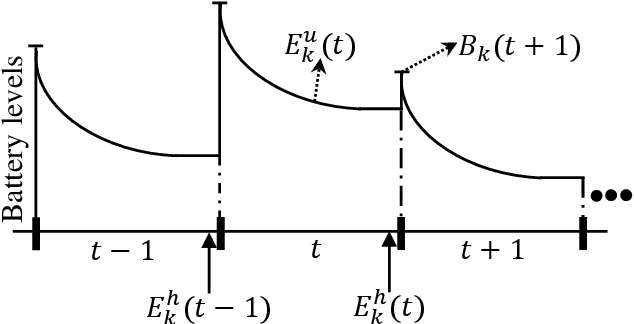
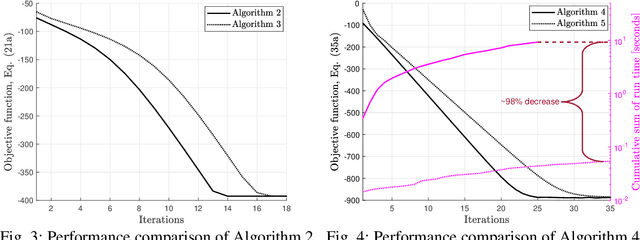
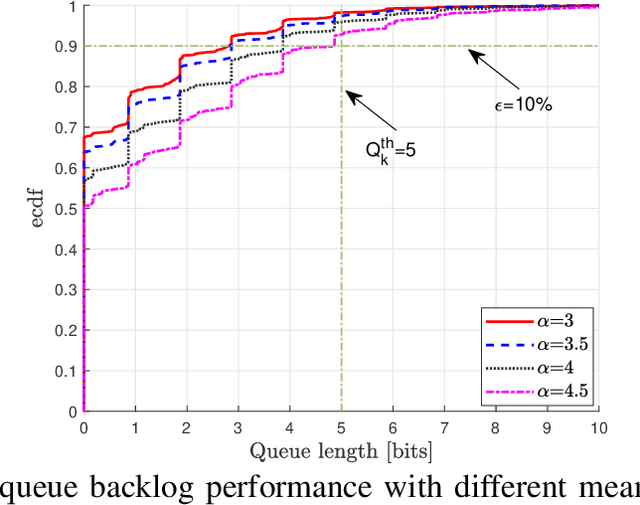
Abstract:Power splitting (PS) based simultaneous wireless information and power transfer (SWIPT) is considered in a multi-user multiple-input-single-output broadcast scenario. Specifically, we focus on jointly configuring the transmit beamforming vectors and receive PS ratios to minimize the total transmit energy of the base station under the user-specific latency and energy harvesting (EH) requirements. The battery depletion phenomenon is avoided by preemptively incorporating information regarding the receivers' battery state and EH fluctuations into the resource allocation design. The resulting time-average sum-power minimization problem is temporally correlated, non-convex (including mutually coupled latency-battery queue dynamics), and in general intractable. We use the Lyapunov optimization framework and derive a dynamic control algorithm to transform the original problem into a sequence of deterministic and independent subproblems, which are then solved via two alternative approaches: i) semidefinite relaxation combined with fractional programming, and ii) successive convex approximation. Furthermore, we design a low-complexity closed-form iterative algorithm exploiting the Karush-Kuhn-Tucker optimality conditions for a specific scenario with delay bounded batteryless receivers. Numerical results provide insights on the robustness of the proposed design to realize an energy-efficient SWIPT system while ensuring latency and EH requirements in a time dynamic mobile access network.
Massive Wireless Energy Transfer with Multiple Power Beacons for very large Internet of Things
Jun 24, 2021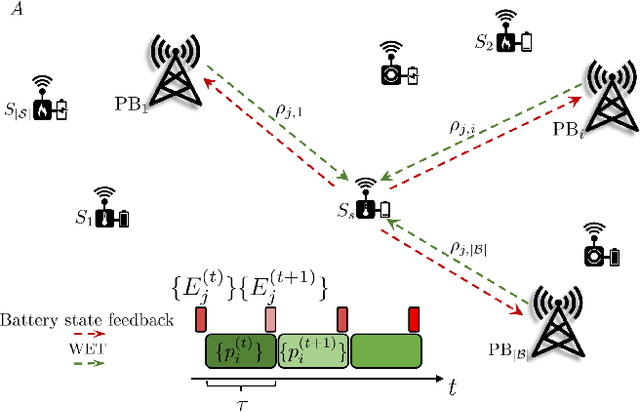
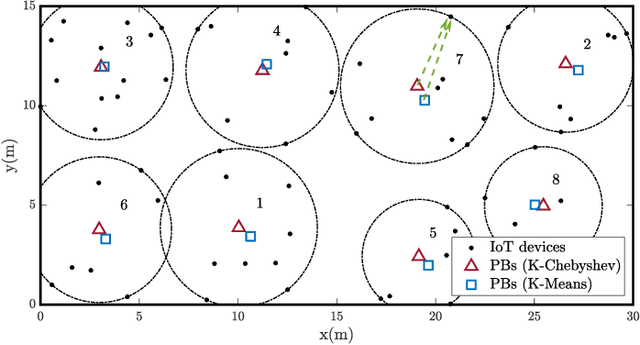
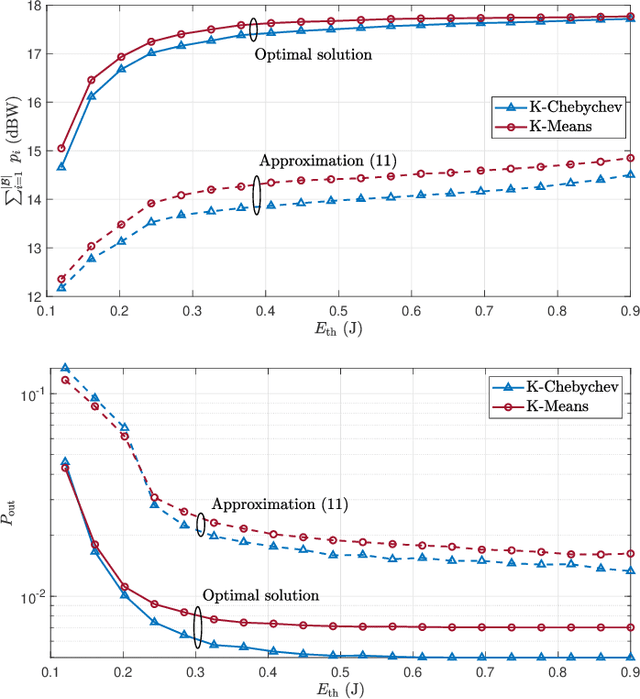
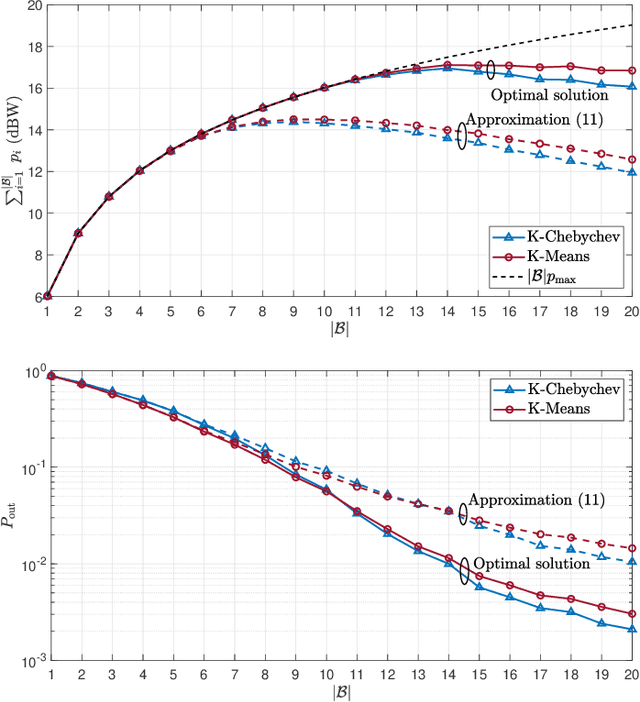
Abstract:The Internet of Things (IoT) comprises an increasing number of low-power and low-cost devices that autonomously interact with the surrounding environment. As a consequence of their popularity, future IoT deployments will be massive, which demands energy-efficient systems to extend their lifetime and improve the user experience. Radio frequency wireless energy transfer has the potential of powering massive IoT networks, thus eliminating the need for frequent battery replacement by using the so-called power beacons (PBs). In this paper, we provide a framework for minimizing the sum transmit power of the PBs using devices' positions information and their current battery state. Our strategy aims to reduce the PBs' power consumption and to mitigate the possible impact of the electromagnetic radiation on human health. We also present analytical insights for the case of very distant clusters and evaluate their applicability. Numerical results show that our proposed framework reduces the outage probability as the number of PBs and/or the energy demands increase.
On the SIR Meta Distribution in Massive MTCNetworks with Scheduling and Data Aggregation
Jan 13, 2021



Abstract:Data aggregation is an efficient approach to handle the congestion introduced by a massive number of machine type devices (MTDs). The aggregators not only collect data but also implement scheduling mechanisms to cope with scarce network resources. We use the concept of meta distribution (MD) of the signal-to-interference ratio (SIR) to gain a complete understanding of the per-link reliability and describe the performance of two scheduling methods for data aggregation of machine type communication (MTC): random resource scheduling (RRS) and channel-aware resource scheduling (CRS). The results show the fraction of users in the network that achieves a target reliability, which is an important aspect to consider when designing wireless systems with stringent service requirements.
 Add to Chrome
Add to Chrome Add to Firefox
Add to Firefox Add to Edge
Add to Edge